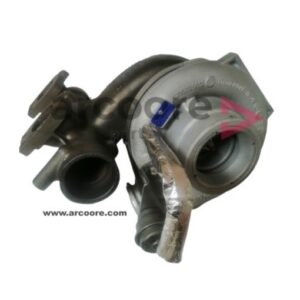Turbocharger – what does it work and what is it responsible for?
What is a turbocharger and how is it built?
A turbocharger is a mechanical device that is driven by the exhaust gases of the engine. The essence of the application of this element is to supply more oxygen to the combustion chamber, which helps to achieve greater engine power. Vehicles equipped with a turbocharger are characterized by increased acceleration, better jerk and higher speeds.Construction and operation of a turbocharger
The main elements that make up the turbocharger are the turbine and the compressor, which are mounted on one bar. The engine exhaust gases set the turbine rotor arms in motion, from where the air is then directed to the compressor. Its function, in turn, is to direct compressed air to the engine.Turbocharger functions
In the past, turbochargers were installed only in racing cars, but their high functionality and impact on the economy of driving and environmental friendliness meant that they were also used in passenger cars, which has become the norm today. In sports cars, the turbocharger was only used to improve engine performance, but other aspects of using this element meant that they were also used in vehicles for other purposes. Oxygen, which, thanks to the turbocharger, enters the combustion chamber in the engine, contributes to the reduction of fuel consumption, which significantly affects the economy of driving. Lower fuel consumption also means fewer harmful compounds escaping from the exhaust into the atmosphere – that is why turbochargers also have a positive effect on the environmental friendliness of vehicles.How to extend the service life of a turbocharger?
In principle, the need to repair or replace the turbocharger is unavoidable throughout the life of the vehicle. However, you can delay your visit to the workshop, and this will prove to be extremely beneficial. The costs associated with faults or a complete failure of the turbocharger may unfortunately turn out to be high, so it is worth ensuring that its technical condition remains at a sufficiently high level for a long time. The easiest way to extend the life of a turbocharger is to properly operate the vehicle. To keep it in good condition you will need:- use of the oil recommended by the vehicle manufacturer;
- regular oil change with a new one with full protective properties;
Featured Products:
Can the turbocharger be regenerated?
Turbochargers can undergo regeneration, which is often better than expected. A regenerated turbocharger, i.e. an element that has been thoroughly cleaned of particles and impurities or contains the replaced components, will work exactly like a turbocharger in a new vehicle.
Unfortunately, regeneration of a turbocharger is not always possible, mainly due to its condition. Too much damage may render the part unsuitable for regeneration. Nevertheless, it is always worth trying, because this way of restoring the vehicle to its optimal technical condition is cheaper than replacing the element with a new one.
Turbochargers – Arcore offer
Our company offers owners of vehicles and vehicle fleets turbochargers for many truck models, such as: Scania XPI, DAF XF 106, MAN TGX Euro 6, Iveco Stralis, Mercedes Actros. We invite you to familiarize yourself with our range of turbochargers.










